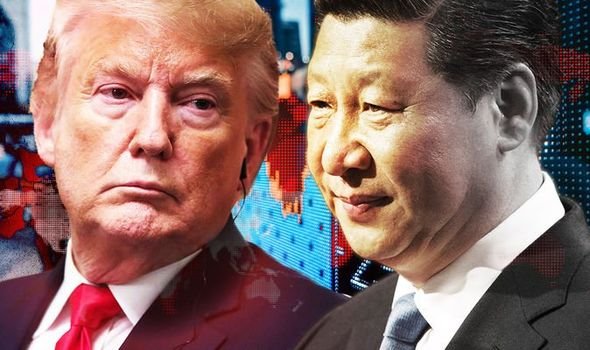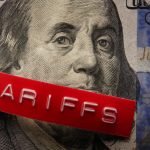
Trump’s Trade War: A Battle Not Worth Fighting?
Posted in :
Trump’s trade war with China began as a bold move to correct trade imbalances and protect American jobs. However, escalating tariffs, retaliatory actions from China, and rising consumer prices cast doubt on the strategy’s effectiveness. Studies show limited benefits and long-term damage to U.S.-China relations and global trade. Ultimately, the question remains: was this economic battle worth fighting?
Donald Trump’s ongoing trade war with China, discussing its implications, effectiveness, and the broader economic context.
As students of history often point out, the lessons of the past are vital for navigating today’s complex policy landscape. So, when Donald Trump launched what he dubbed a necessary confrontation against China during his presidency, many couldn’t help but recall similar trade conflicts from history. The promise of a 245% tariff was bold, but what does the reality of Trump’s trade war reveal?
The Genesis of Trump’s Trade War
Donald Trump’s trade war with China didn’t happen overnight. It was the result of years of escalating tensions and a series of bold statements. His rhetoric has been loud and clear: China is “taking advantage of us” and “ripping us off.” But what does this really mean? And how did it all unfold?
Analysis of Trump’s Rhetoric Regarding China
Trump’s language has always been direct. He often painted China as the villain in the story of American trade. His belief? That China manipulates trade to its advantage. This belief is not new. For decades, many have pointed to the trade imbalance between the two nations as a significant issue. Trump, however, took it a step further.
He didn’t just criticize; he promised action. His statements were filled with urgency. He claimed that the trade imbalance with China had “gone on long enough.” This sentiment resonated with many Americans who felt the sting of job losses and factory closures. But was it just rhetoric? Or was there a real plan behind it?
Timeline of Escalating Tariffs and Trade Measures
The trade war officially began in 2018. Here’s a brief timeline of key events:
- January 2018: Trump imposed tariffs on solar panels and washing machines.
- March 2018: He announced tariffs on steel and aluminum imports.
- July 2018: The first round of tariffs on $34 billion worth of Chinese goods went into effect.
- September 2018: Another $200 billion in tariffs were added, with China retaliating.
- January 2019: Trump delayed a planned increase in tariffs, seeking negotiations.
- December 2019: A “phase one” trade deal was reached, but tensions remained.
These measures were not just about economics. They were also about sending a message. Trump wanted to show that he was serious about changing the status quo. But did these tariffs achieve their intended goals? Or did they create more problems than they solved?
Key Figures and Events That Shaped the Trade War
Several key figures played a role in shaping the trade war. From advisors to trade representatives, each had their influence. For instance, Robert Lighthizer, the U.S. Trade Representative, was a crucial player. He pushed for tough measures against China, believing that a strong stance was necessary.
Additionally, the events surrounding the trade war were significant. The ongoing negotiations often felt like a game of chess. Each side made moves, counter-moves, and sometimes, unexpected retreats. The stakes were high, and the outcomes uncertain.
As the trade war progressed, it became clear that it was not just about tariffs. It was also about technology, intellectual property, and national security. The U.S. accused China of stealing trade secrets and unfair practices. This broadened the scope of the conflict beyond simple trade deficits.
The Role of Trade Imbalance in Fueling the Trade War
At the heart of Trump’s trade war was the issue of trade imbalance. The U.S. has run a trade deficit with China for years. This means that the U.S. imports more from China than it exports. Many economists argue that this is a natural outcome of global trade. But for Trump, it was unacceptable.
He believed that this imbalance hurt American workers and industries. The narrative was compelling. It tapped into the frustrations of many who felt left behind in the global economy. But was the trade imbalance the sole reason for the trade war? Or was it a convenient scapegoat?
In summary, the genesis of Trump’s trade war was complex. It involved a mix of rhetoric, policy decisions, and key figures. The trade imbalance served as a catalyst, but the motivations ran deeper. As the trade war continues to evolve, the implications for both nations remain significant.
“The trade imbalance with China has gone on long enough” – Donald Trump
Tariff Strategy: Ineffective and Unsustainable
In recent years, tariffs have become a hot topic in economic discussions. The objective of a staggering 245% tariff has been proposed, particularly aimed at China. But what does this really mean? Is it effective? Or is it just a political tool?
Examination of the 245% Tariff Objective
The idea behind such a high tariff is to protect domestic industries. Proponents argue that it will level the playing field. They believe that by imposing these tariffs, American products will become more competitive against cheaper Chinese imports. But is this really the case?
Many experts argue that while tariffs might seem beneficial in the short term, they can lead to long-term economic issues. For instance, a 245% tariff could significantly increase prices for consumers. Imagine paying much more for everyday items. Would that really help the average American?
Industry Sectors Most Affected by Tariffs
Not all industries are affected equally by tariffs. Some sectors feel the impact more than others. Here are a few key areas:
- Manufacturing: This sector often relies on imported materials. Higher tariffs can increase production costs.
- Agriculture: Farmers may face retaliatory tariffs from China, affecting their exports.
- Technology: Many tech companies depend on components made in China. Tariffs can disrupt supply chains.
These industries are just the tip of the iceberg. The ripple effects can be felt throughout the economy. When one sector suffers, it can lead to job losses and reduced economic growth.
Countermeasures Employed by China
In response to the tariffs, China has not remained passive. They have implemented various countermeasures. These include:
- Retaliatory Tariffs: China has imposed its own tariffs on American goods, targeting industries like agriculture.
- Currency Manipulation: Some analysts suggest that China may devalue its currency to offset the impact of tariffs.
- Trade Partnerships: China is seeking new trade agreements with other countries to reduce reliance on the U.S.
These countermeasures illustrate that tariffs can lead to a tit-for-tat scenario. Instead of resolving trade imbalances, they can escalate tensions. Is this the outcome that policymakers desire?
University Studies Assessing Tariff Effectiveness
Numerous university studies have examined the effectiveness of tariffs. The consensus is often that they do not deliver the intended economic benefits. For example, a study from a leading university found that tariffs can lead to job losses in the long run. While some jobs may be protected, others are at risk.
Moreover, the long-term effects of tariffs can be detrimental. They can stifle innovation and reduce competitiveness. Companies may become complacent, relying on tariffs rather than improving their products. Is this the future we want for American industries?
Long-Term Versus Short-Term Effects of Tariffs
When considering tariffs, it’s crucial to differentiate between short-term and long-term effects. In the short term, tariffs may provide a temporary boost to certain industries. However, in the long run, they can lead to higher prices for consumers and strained international relations.
As the economic analyst noted,
“Tariffs might be politically popular, but they don’t deliver the intended economic benefits.”
This statement encapsulates the dilemma facing policymakers. They must weigh the immediate political gains against the potential long-term economic fallout.
The answer? Tariffs and other measures to ease the imbalance. But what does that look like? It requires a careful balance of protecting domestic industries while fostering international trade. It’s a complex issue that demands thoughtful consideration.
Consequences of the Trade War: Who Really Pays?
The trade war between the United States and China has been a hot topic for several years. It has sparked debates, protests, and even changes in consumer behavior. But who really pays the price for these tariffs? The answer is often more complicated than it seems.
The Impact on American Consumers and Businesses
When tariffs are imposed, they don’t just affect the countries involved. They ripple through the economy. American consumers feel the pinch almost immediately. Prices for everyday goods rise. This is not just a theory; it’s a reality. For example, electronics, clothing, and even food items have seen price increases. A recent study showed that consumer goods have become significantly more expensive due to these tariffs.
Businesses, especially small ones, are also feeling the heat. They rely on affordable imports to keep their prices competitive. When tariffs increase costs, businesses often pass those costs onto consumers. This leads to a cycle of rising prices. As a result, many consumers are forced to make tough choices. Do they buy the more expensive product or forgo it altogether?
“In the end, it’s the consumer who always bears the brunt of tariffs” – Trade Policy Expert
Global Reactions and Adjustments in Trade Practices
The trade war has not only affected the U.S. and China. Other countries are adjusting their trade practices as well. Nations around the world are watching closely. They are concerned about the potential fallout. Some countries have started to seek new trade partners. Others are looking to strengthen their own economies in response to the shifting landscape.
For instance, countries in Southeast Asia have seen an uptick in trade as companies look to diversify their supply chains. This is a strategic move. By reducing reliance on China, businesses can mitigate risks associated with tariffs. However, this shift also means that some countries may benefit at the expense of others. It’s a complex web of global trade dynamics.
Potential Long-Term Damage to US-China Relations
The long-term implications of the trade war are still unfolding. One of the most concerning aspects is the potential damage to U.S.-China relations. Historically, trade has been a bridge between nations. It fosters cooperation and understanding. However, the current climate is fraught with tension.
As tariffs continue to escalate, the possibility of a more adversarial relationship grows. This could lead to further economic isolation for both countries. The repercussions might not just be economic; they could also affect diplomatic relations. If the two largest economies in the world cannot find common ground, the future looks uncertain.
Trump has often claimed that China is “taking advantage of us” and “ripping us off.” While these statements resonate with some, they also oversimplify a complex issue. The reality is that trade is a two-way street. Both countries have benefited from their economic relationship. Disrupting this balance could have unforeseen consequences.
The consequences of the trade war are far-reaching. American consumers and businesses are feeling the impact through rising prices and changing market dynamics. Global reactions are reshaping trade practices, as countries seek to adapt to the new reality. Most importantly, the potential long-term damage to U.S.-China relations could alter the global economic landscape for years to come. As the situation evolves, it remains crucial to consider who truly pays the price in this ongoing conflict. The answer may not be as clear-cut as it seems.
TL;DR: Trump’s trade war against China may have been initiated with good intentions, but the evidence suggests it has not produced the desired outcomes, raising many questions about its true effectiveness.
TariffEffects, TrumpPresidency, TradeWarConsequences, TrumpTradeWar, USChinaRelations, GlobalTradeDynamics, EconomicImpactOfTariffs, ChinaTariffs
#TrumpPresidency, #EconomicImpactOfTariffs, #USChinaRelations, #TariffEffects, #GlobalTradeDynamics, #TrumpTradeWar, #ChinaTariffs, #TradeWarConsequences,#Tariffs, #Inflation, #GlobalTrade, #EconomicForecast, #TrumpTradeWar, #ChinaTariffs, #GlobalEconomy, #USChinaRelations, #TradeImbalance, #TariffPolicy, #ConsumerPrices, #TradeConflict, #EconomicPolicy, #SupplyChainDisruption

